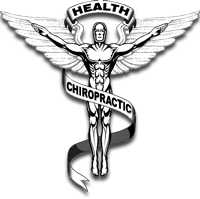PATIENT TESTIMONIALS & EXPERIENCES
A CASE REPORT: Michelle
A 42 year old female presented with an unsteady Parkinsonian type of gait (shaking, rigidity and pain) diagnosed as psychogenically driven based on various university healthcare clinics. She also had tremors that would occur when she would stand from a seated position starting from her right leg and radiating superiorward affecting her whole body. She also diagnosed with an atypical version of a complex regional pain syndrome (CRPS) called complex pain syndrome (CPS) due to its whole body generalization as well as a history of migraines. CRPS is a severe chronic pain condition characterized by sensory, autonomic, motor, and dystrophic signs and symptoms. Patients with CRPS are commonly refractory showing only modest improvement with most current therapies [1]. In one study CRPS (n=888) syndrome affected mostly white women in the 25- to 55-year-old age group. It was often precipitated by trauma (surgical or nonsurgical) and commonly involved the lower ( approximately 56%) and upper ( approximately 38%) extremities [2]. Evaluating referral patterns for CRPS (n=102) 61% had presented first at the general practitioner, while 80% subsequently consulted one or more medical specialists, most frequently an anesthetist (55% of the cases) or a specialist in rehabilitation medicine (41%) [3]. The patients CPS was fibromyalgic in nature with pain that was severe, migratory and occurred in multiple major joints, all her muscle groups experienced pain, spasms, and involuntary contractions. She had nighttime leg spasms that would awaken her from sleep. The pain and muscle tension led to multiple ranges of motion limitations generalizing to all joints of her body. The patients condition had been occurring for 9 years and was gradually worsening. The patient had seen neurologists, internal medicine, rheumatologists, and visited multiple university hospital clinics. At the initial office visit she was prescribed medications for her tremors, migratory pain, and migraines that included Aciphex, Topamax, Atenolol, Tramadol, Gabapentine, Cymbalta, Minoxidil, Fluocinonide, Zanaflex, and Neurontin. A sleep study at Stanford University Health Clinic found that the patient did not exhibit sleep apnea however she still had no REM sleep even though she was taking sleeping medication and would sleep. This finding helped explain why she found her sleep not restful. Due to the severity of the patients symptoms and their whole body disturbance on her multiple levels chiropractic and dental care was attempted since all other interventions were unhelpful.
Methods Intervention/Treatment
Initially the patient was co-treated with a dental night and day time appliance, trochanter belt, and treated for category two or sacroiliac joint hypermobility syndrome. During the course of treatment over the initial months she was treated with category two protocols, sutural cranial temporomandibular joint (TMJ) interventions, T8 chiropractic manipulative reflex technique (CMRT) for the liver along with supportive nutritional supplements and dietary restrictions to support liver function and reduce general body inflammation. The SOT cranial procedures were incorporated to facilitate her category two stabilization and enable her to accommodate to the dental modifications.
Results
At the first office visit with the dental appliance, trochanter belt and category treatment all her shaking would stop when standing. Concurrently as the shaking would cease her pain would also be reduced and her range of motion also increased gradually but notably over the months of care. Treatment began in February 2009 and she was treated only one time per week and though she attempted to come for treatment more frequently the travel time to the office (2.5 hours one way) was too stressful, physically and emotionally. While she was initially treated one time a week from February 2009 through July 2009 following July 2009 she reduced care to two treatments per month.
